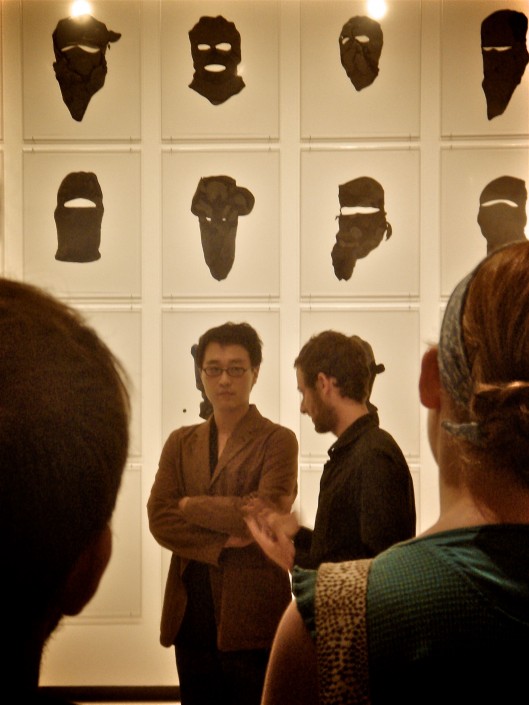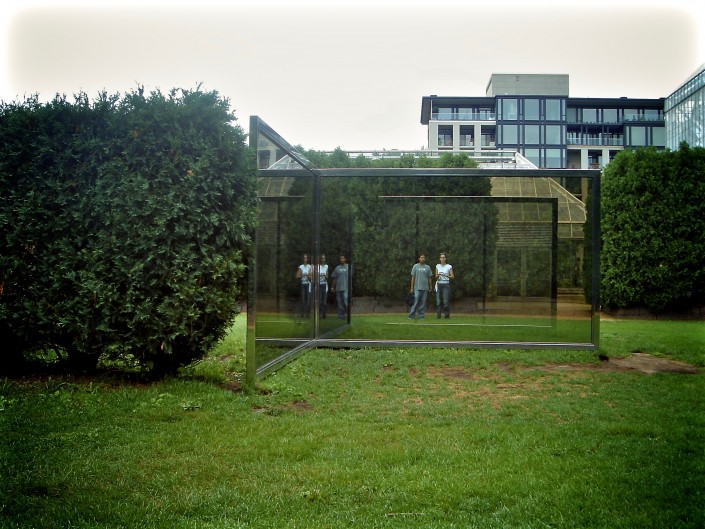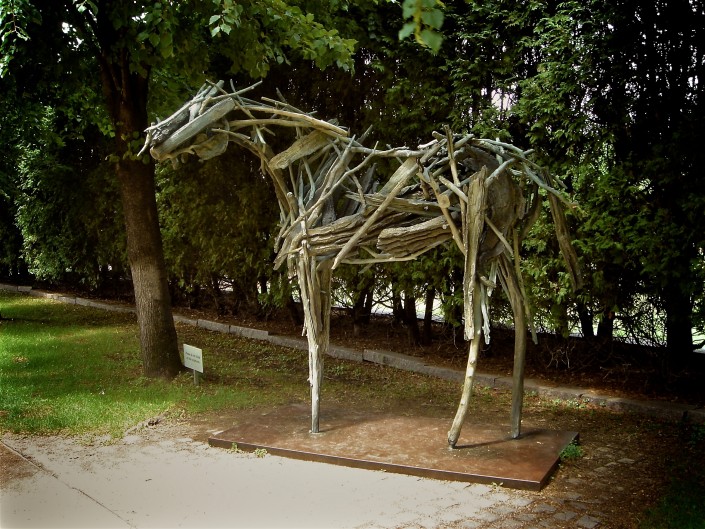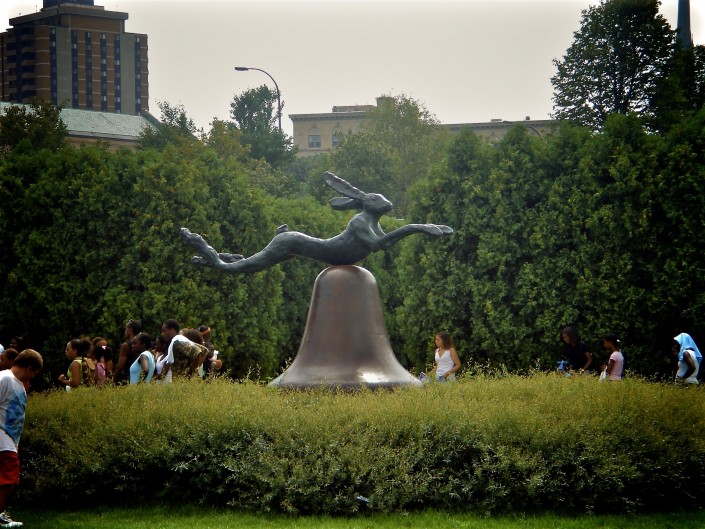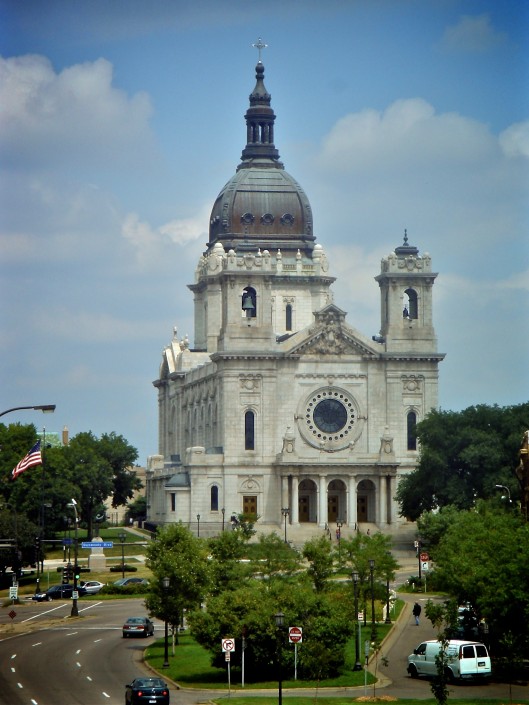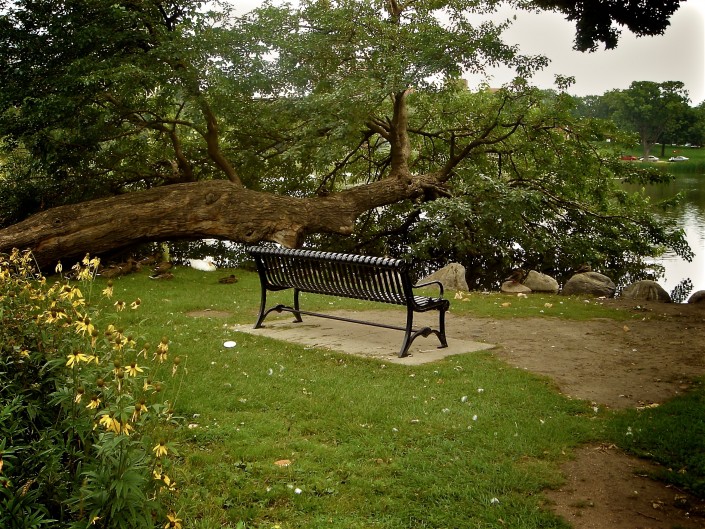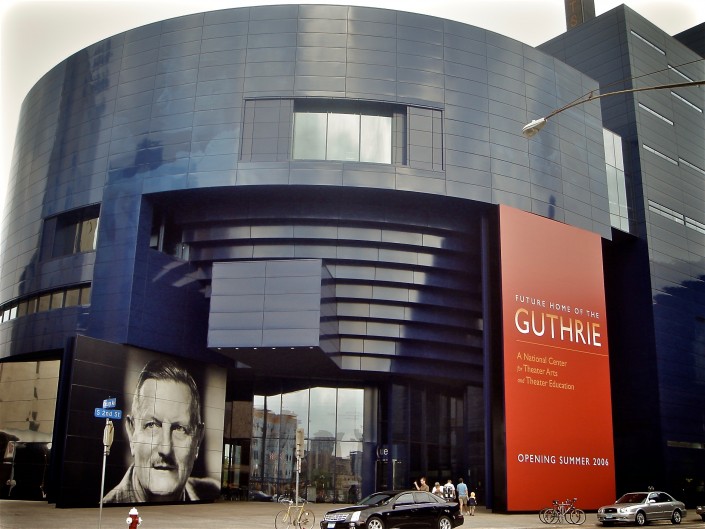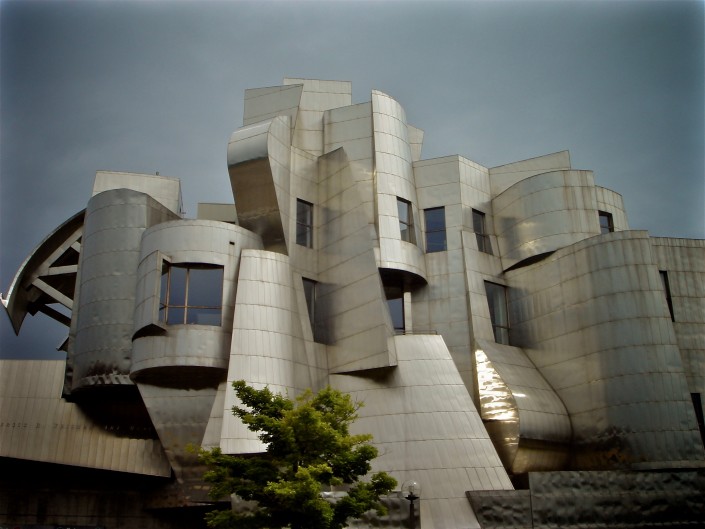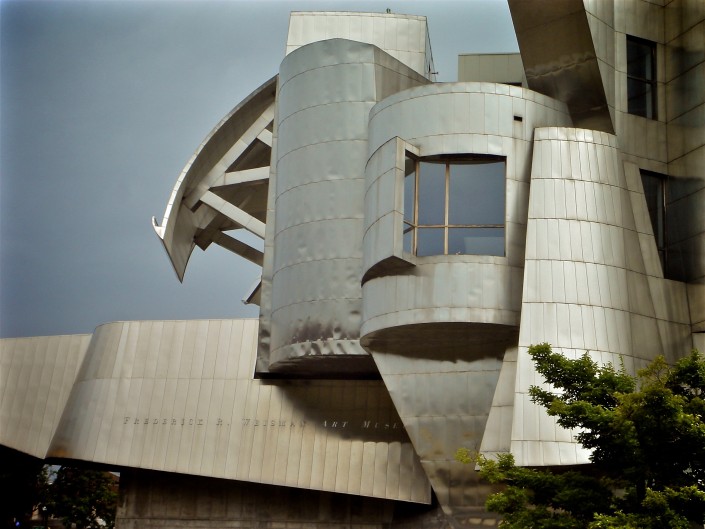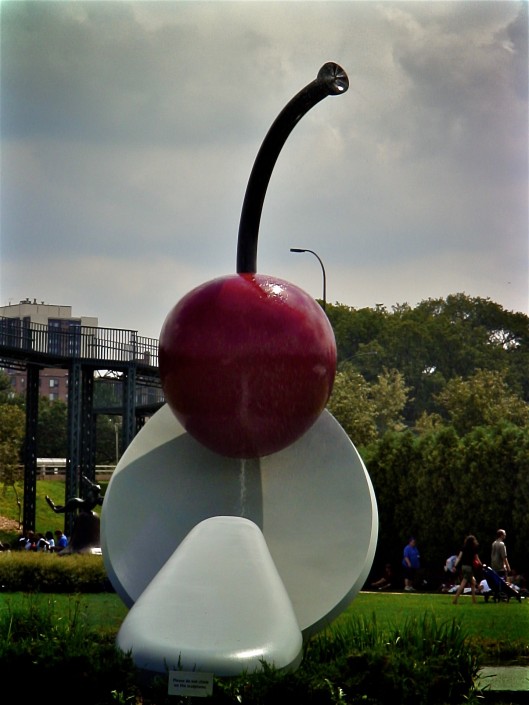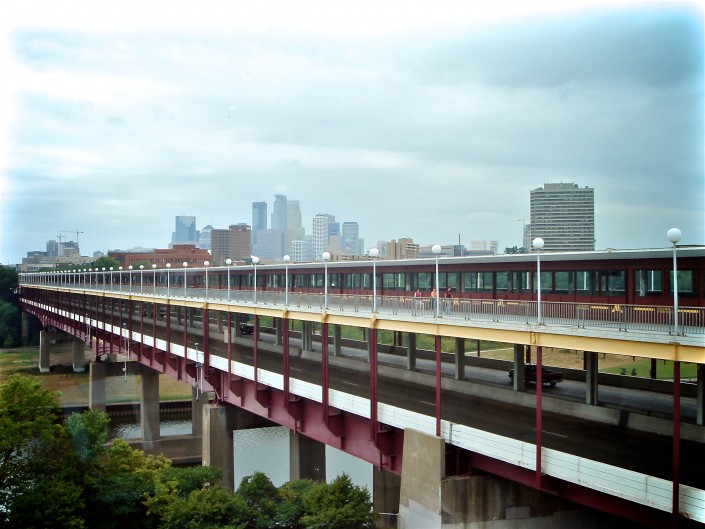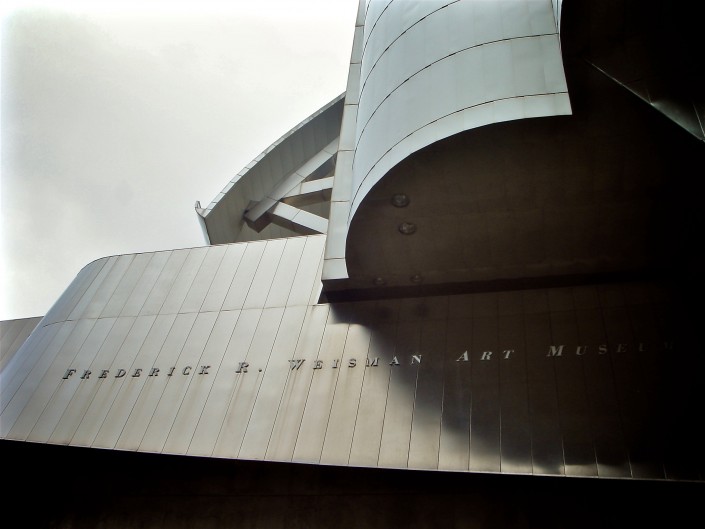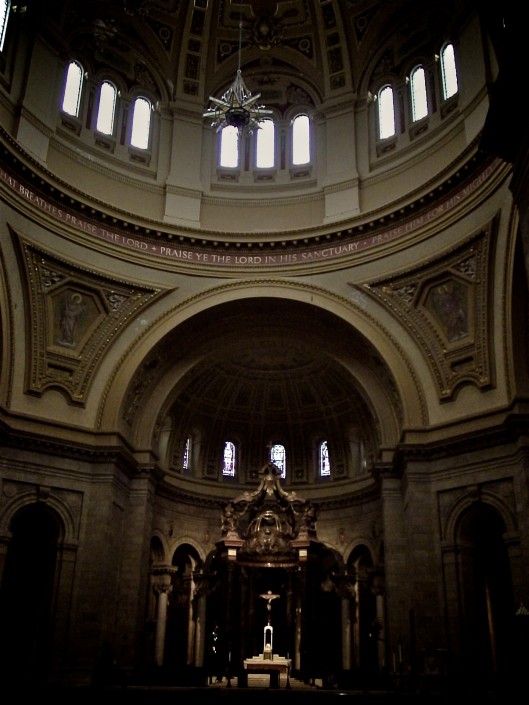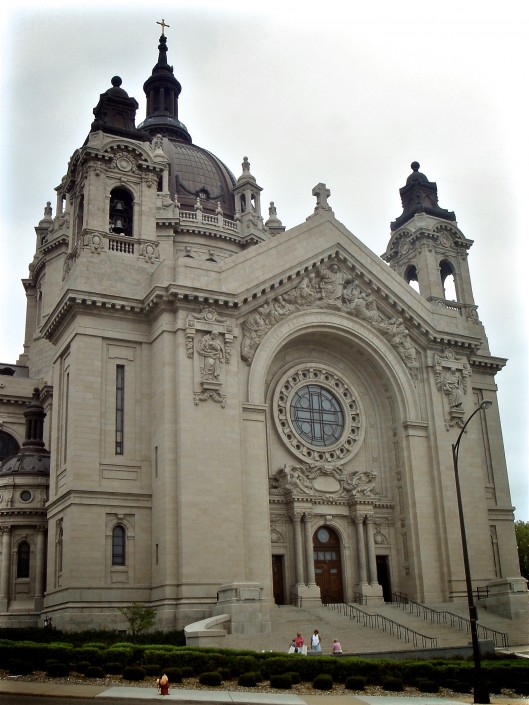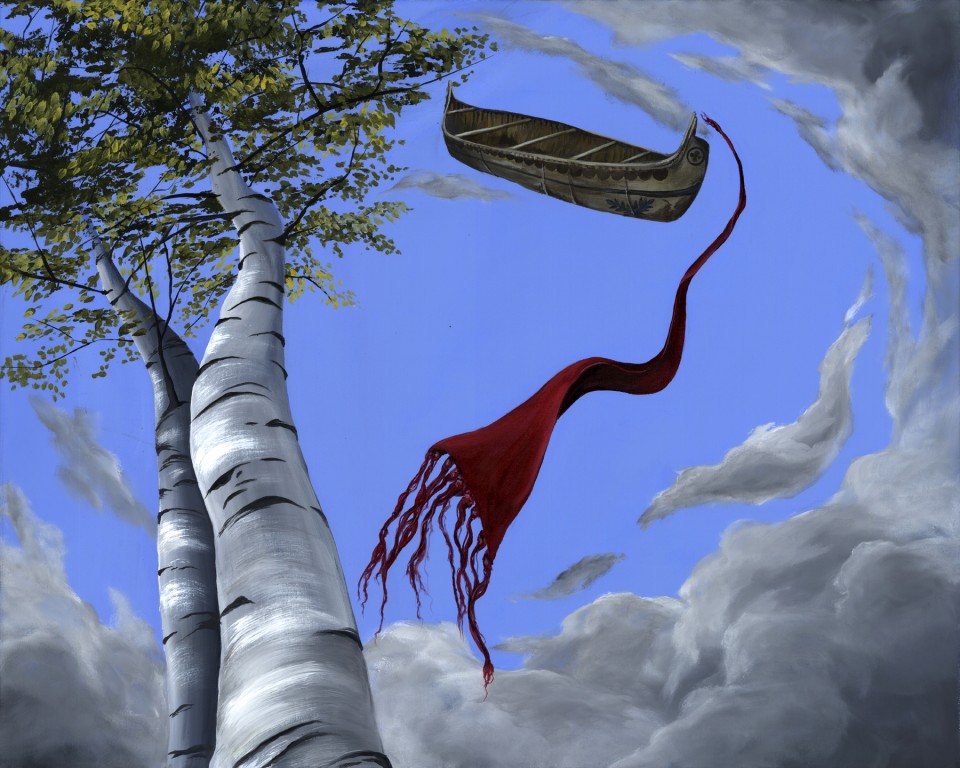
We enter Minnesota late at night, and pull off to sleep in a small clearing. The next morning, we stop at Kabetogama Lake Visitor’s Center in Voyageurs National Park. Here, Minnesota borders Canada and countless lakes, bays and small waterways break up the land. The park offers canoe trips through these passages, but it turns out that we have just missed the boat. I wander through a maze of diagrams and dioramas before noticing a park volunteer who is dressed in oversized, but vibrant clothing. Layers upon layers of fabric drape over her body and a long red sash is tied tightly around her waste like the bow on a poorly wrapped Christmas present. I ask her about her ostentatious dress and she shares the story of great men of the region from the 1700’s.
Jacques de Noyon was the first French trader known to reach the Rainy Lake Region. While he arrived in 1688, it wasn’t until around the 1730’s that the area became known for fur trading. Fur became heavily desirable in European fashion, so acquiring beaver pelts from the Native American tribes proved to be a profitable business. French voyageurs set out from Canada on birch bark canoes to trade supplies with the Sioux, Cree, and Ojibwa Indians. Their life expectancy and pay were low, but these highly sought after careers made the men famous in town. Each layer of clothing had a purpose. For example, their oversized blouses offered comfort and relief from pestering insects. The fancy, finger-woven sash (called a ceinture fleche) had many uses. One of its purposes was to prevent hernias – like the modern-day weightlifting belt.
I am fascinated in the history of this place, but know it won’t be long until I forget the dates and details (which is why you can always find me fervently scribbling notes into my sketchbook). However, I will vividly remember that bright red scarf, and the feeling of raw adventure flowing through the waterways.
After we leave the park, we are off to discover romantic architecture in the “Twin Cities.” The gothic design of St. Paul’s Cathedral and the detailed beauty of the Victorian houses on Summit Avenue are full of style and grandeur. Then we stand in front of Frank Gehry’s building (The Weisman Museum), and I’m a little disappointed. The broken lines and a cubistic style of the building reminds me of Picasso’s Man with a Violin if it were framed in a baroque-style frame. I admire the design, but the shiny metal surface reminds me of aluminum cans, making the structure appear cheap and unsubstantial against its neighbor St. Mary’s Basilica designed in a beaux-arts style. This museum lacks a feeling of permanence, along with the newly built Guthrie, designed by Jean Nouvel. Modern architecture is impactful but in Minneapolis I favor the Institute of the Arts and surrounding churches….not that I expect anyone to take my word alone, after all, I am just an art school drop out traveling the country like a painting gypsy.
We visit the Mall of America and stand in front of the famous “Spoonbridge and Cherry” sculpture before attending an artists’ talk at the Walker Center. The exhibit is called “Ordinary Culture,” and for the record, there is nothing ordinary about these three artists! It’s an awesome show and I can’t help but gasp to think “someday I want to be just like them!”
Our week in Minneapolis is coming to an end and my favorite experience is meeting the husband and wife owners of Homewood Studios. George Roberts, gallery owner and retired English teacher, takes us into his studio where he creates art in book form. A vast collection of paper, typography, and book binding supplies fill the space. His work and outlook on life are fascinating. We talk to him and his wife until dusk. They have created a gallery that also rents out studio spaces to local artists. The space is a beautiful community of creativity so we feel so much honor when they mention that they would like to do a full month exhibition of all the 50 pieces when we complete our journey. Alfonso and I have been incredibly inspired by the landmarks and landscapes of this land, yet only when we stop to interact with the people who walk amongst us do we feel the true gift of America.


